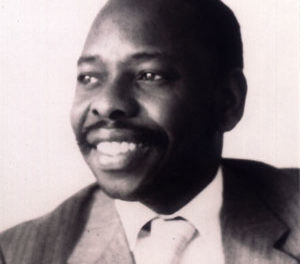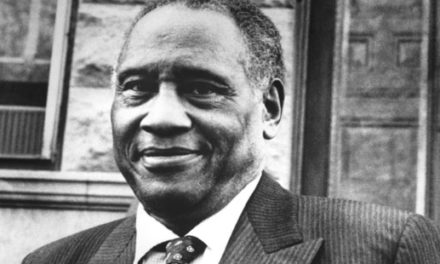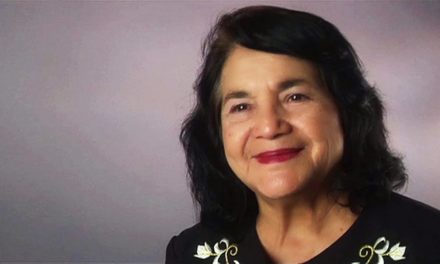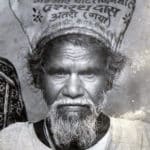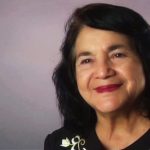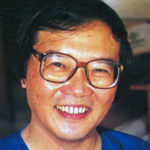A Megaphone for the Marginalized
Few give their entire life to serving others. George “Elfie” Ballis is one of those few. He was a powerful force for social change, characterized by his fluid and adaptive influence and his willingness to work behind the scenes. He was a champion for the environment, empowered people to stand up for their rights, and a became a megaphone for the marginalized across the United States.
On August 12, 1925, George Ballis was born into the booming town of Faribault, Minnesota. He grew up off the radar, working as a teenager in the cornfields, serving as a mechanic in the Marine Corps during World War II, earning a degree in Journalism and Political Science from the University of Minnesota and working various factory jobs in his early 20’s. It wasn’t until 1953 that he would begin down the path of becoming a hero. After a short stint of writing articles for the Wall Street Journal, the 28-year-old George Ballis became editor of the Valley Labor Citizen in Fresno, California. Seven years later a dispute would arise over his editorial support of Cesar Chavez and the United Farm Worker movement. The Valley Labor Citizen was supported at the time by trade unions who opposed Chavez primarily because of his race. George was forced to resign and the paper was shut down. Though at the time this felt like a huge loss, it became the springboard that propelled George into becoming a history maker rather than a history recorder.
In previous months George Ballis had taken a photography course with the famous Great Depression photographer Dorothea Lange. Under the influence and training of Dorothea, he discovered his ability to amplify the voices of the downtrodden. George then began taking pictures of the living and working conditions of migrant farmers in California’s Central Valley. However, George didn’t confine himself to “proper” photojournalism that often patronized the poverty of others. Instead, he built relationships and gained the respect of his subjects so he could fade into their comfort zone and catch authentic and significant interactions which highlighted their dignity, struggles, and triumphs. George made it his goal to use his abilities as a voice for those who were marginalized.
“I wanted my photographs to reflect to them the power and dignity they had” – George Ballis
It wasn’t long before others noticed George’s unique photographs and his skill for advocating through photography. Soon he was asked to take photos for the Agricultural Workers Organizing Committee (AWOC). His photos of Chavez and the early farmworker’s movement became some of the most published as news of the movement spread across the nation.
Throughout the 1950s George been surrounded by leaders who were organizing, advocating and empowering and he had been paying attention. In the 1960’s he took the knowledge he gained while being “embedded” in the movement and began sharing it with others. George became a part-time organizer for a union that would precede the United Farm Workers union (UFW), a freelancer for government anti-poverty programs. He also traveled to Mississippi to support the civil rights movement by joining the Southern Documentary Project, aiding the Student Nonviolent Coordinating Committee (SNCC) with research and documenting the Democratic National Convention. In addition to passing on his knowledge, George is credited with creating the largest collection of photos documenting those movements (over 30,000).
In 1969 George Ballis would meet his future wife Maia Johnson, who was volunteering with a migrant education program. The two would join efforts with Luis Valdez to produce “I Am Joaquin,” a prize-winning film on Chicano history. Later George and Maia would go on to produce many other films including “The Dispossessed” (A film on the struggle of Pit River Indians to regain lands lost to corporations), “The Oakland Five” (A film about the oppressive actions of the Oakland school board towards black youth.) and “Toughest Game In Town” (A film about the poor organizing to climb out of poverty in Santa Fe). Through the use of image and poetry, they were able to spread awareness of these social struggles far beyond the affected groups.
“[A mirror] will remind you that you are part of a lot of the society’s problems and that you have a lot of authority to change things.” – George Ballis
George would continually bend and adapt to help overcome the next social challenge he came across. The now bearded George was given the name “Elfie” and began connecting his life-long love of agriculture and gardening with his passion for people. After watching many century-old family farms collapse under the rapid expansion of corporate farms he began to do his research. George found that corporate farms were illegally purchasing more land than allowed and illegally collecting government subsidies for the water they used. He, Maia, Berge Bulbulian and others formed the National Land for People (NLP) and campaigned in an effort to have the federal government enforce their laws. George and those working with the NLP faced fierce opposition from the corporate farms who tapped their phones, hired goons to ransack their offices, and pressured Wells Fargo into illegally releasing their financial records.
Undeterred, George decided to take a hands-on approach to educate others by driving a tour bus that would that would visit the large tracts of land owned by agribusinesses on corporate welfare as well as the small organic farms and localized distribution networks. His tangible tours were highly influential in increasing support for the NLP. Despite winning court cases over a seven-year span, including a U.S. Supreme Court case, the NLP efforts were cut short in 1982 when Congress decided to protect the corporate farm activities by changing the laws rather than allowing their enforcement.
“We can’t do it alone… We must become vulnerable, open our hearts, and work together.” – George Ballis
Throughout the 1980’s George continued in his support of environmental issues that directly impacted the lives of rural Americans. He became the national president of the advocacy group Rural America and started the Sun Mountain land trust to promote low-cost, environmentally friendly housing for farm workers. On Sun Mountain’s 40 acres they tested and perfected everything from using alternative energy to organic and natural farming techniques.
Despite all of his effort and achievements, his later years were just as full of activism, photography, and advocacy. He created documentaries and promoted the efforts of Chicanos, Native Americans, Vietnam veterans, home care workers, at-risk teenagers, and sweatshop workers. George Ballis died at the age of 84 on September 24, 2010. His entire adult life was spent seeking the betterment of others and the land upon which they lived.





